New density dogs Bay State Village neighborhood
| Published: 02-28-2021 7:19 PM |
NORTHAMPTON — Rue Walther moved to the Bay State Village neighborhood in 2004, drawn to it in part because she could afford it. She bought an 840-square-foot home for $185,000.
She knew her next-door neighbor had a large lot, but when it was sold, she never imagined multiple houses would be built there.
“All of a sudden, one day I looked out and there were two foundations going in,” she said of the area next to her house, which has become 8 and 12 Warner St.
At that corner of Warner and Federal streets, there was one house on a piece of land that was actually two parcels, said Carolyn Misch, the city’s assistant director of planning and sustainability. John Handzel of Nu-Way Homes in East Longmeadow bought the land and split it into four parcels where there will be four homes, she said, including newly built 8 and 12 Warner St.
Walther is one of a number of neighbors concerned about the size and density of new homes built or in the works in their neighborhood. They worry this type of development is changing their neighborhood — including making it more expensive. Some have formed a group, “Save Bay State Village” to address the issue, which many blame on city zoning.
Walther now abuts the newly built Warner Street homes.
“All of the sudden I went from buying a house in a lovely little neighborhood where people had yards to realizing I have a house that’s next door to what I like to refer to as the compound,” Walther said.
As a teacher who spent most of the last year working remotely, Walther also took issue with the construction noise and said she had to teach from a friend’s house.
Article continues after...
Yesterday's Most Read Articles
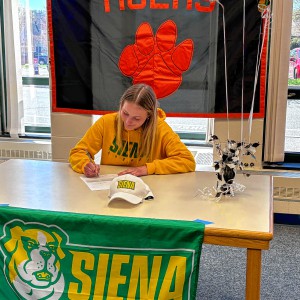 South Hadley’s Lauren Marjanski signs National Letter of Intent to play soccer at Siena College
South Hadley’s Lauren Marjanski signs National Letter of Intent to play soccer at Siena College
 LightHouse Holyoke to buy Gateway City Arts, expand offerings and enrollment at alternative school
LightHouse Holyoke to buy Gateway City Arts, expand offerings and enrollment at alternative school
 Treehouse, Big Brothers Big Sisters turn race schedule snafu into positive
Treehouse, Big Brothers Big Sisters turn race schedule snafu into positive
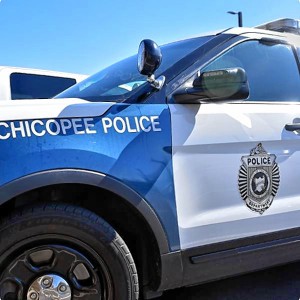 South Hadley man fatally shot in attempted robbery
South Hadley man fatally shot in attempted robbery
 Granby man admits guilt, gets 2½ years in vehicular homicide
Granby man admits guilt, gets 2½ years in vehicular homicide
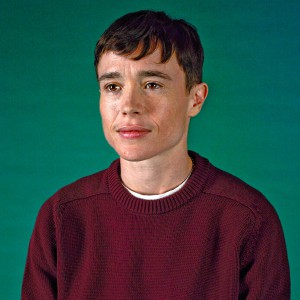 Area briefs: Transhealth to celebrate 3 year; Holyoke to plant tree at museum; Documentary film about reparations focus of Unitarian talk
Area briefs: Transhealth to celebrate 3 year; Holyoke to plant tree at museum; Documentary film about reparations focus of Unitarian talk
Down the street at 61 Warner St., Handzel plans to knock down the existing house and turn the property into three lots, Misch said. However, the Historical Commission decided the property meets the criteria to be considered “preferably preserved,” and enacted a demolition delay through October, though that could change if certain requirements are met, according to Sarah LaValley, the city’s conservation and preservation planner.
In August, Nu-Way homes also bought 39 Landy Ave., which is part of the same neighborhood. Misch said Handzel has not yet filed plans for the property yet, but that if he wanted to, he could put at least two homes on the property, and possibly three,. Handzel declined to comment for this story.
Debra Bercuvitz, who is involved in the Save Bay State Village group, takes issue with the scale and density of the new homes.
“He’s maximizing every possible dollar he can get out the projects at the expense of the neighborhood,” she said of the developer.
Bercuvitz said affordability is a major concern of hers,as the neighborhood has been one of the most affordable in Northampton. She does not believe the new homes are going to help more people afford housing.
“It’s going to help more people afford $600,000 or $650,000 houses,” she said.
The home at 12 Warner St., built by Nu-Way Homes and next to Walther, was listed on Williams Raveis as a 1,871-square-foot home priced at $598,000, while 8 Warner St. is listed at $579,900 and is under contract by Coldwell Banker Realty. Neither has officially sold, according to county property records.
“I am just predicting it’s going to be pretty impossible for anyone to buy a house in Bay State at this point … The land has become too valuable,” Bercuvitz said. “My phrase is, “yards are monetized” … a yard has become a building lot or a small house has become a tear-down for multiple houses.”
Jackie Ballance, who is also active in the Save Bay State Village group, sometimes refers to the neighborhood development as “the nightmare on Warner Street” or as “the green monsters,” referring to the green house wrap on them. She worries the new homes will not be environmentally sustainable. If Nu-Way homes put up “net zero tiny houses, oh my god we would celebrate him like a hero,” she said.
Although some neighbors complain the homes are large, 8 and 12 Warner St. are listed at around 1,800 square feet, and Misch pointed out that the median home size in Northampton is 1,700 square feet. New construction also needs to meet the city’s energy “stretch code,” and the neighborhood is in walking distance to the Mill River and the high school, and is less than a mile from downtown Florence, she said.
“Combined, transportation and residential buildings are the largest greenhouse gas emissions stats for Northampton,” Misch wrote in an email. “In other words, the further out we build the more we have to drive to get anywhere and the bigger our footprint. To the extent that we can bring housing closer to where people are traveling, their transportation demands go down.”
Diane Scott scowled from inside the door of her house — which is near 39 Landy Ave., which Nu-Way Homes purchased — when asked if she would talk to a reporter about development in the neighborhood. She said she’s worried multiple homes may be put on the Landy Avenue property.
“I would like there to be some respect for the character of the neighborhood,” she said.
Cate Rowen has lived in the neighborhood since 1999 and is not involved in the Save Bay State Village neighborhood group. She said she’s not a fan of the newer and more expensive homes.
“I don’t want to be a NIMBY,” she said. “I believe in infill. I want walkability.”
Rowen said there are a lot of walkers in the neighborhood, but “there are no sidewalks … What’s infill without sidewalks?”
Creating sidewalks alongside density is important in creating a pedestrian-friendly neighborhood, said Wayne Feiden, director of the city’s department of planning and sustainability, adding that the mayor recently announced funding for traffic improvements to make Northampton more walkable.
Ward 5 City Councilor Alex Jarrett said he has heard concerns from constituents in the neighborhood.
“Bay State is kind of a focal point for this, because of the many lots, there are larger and the properties are relatively inexpensive,” he said in an interview in December. “In a neighborhood like along Elm Street, there’s no way it would make any financial sense to tear down a house because it would cost too much to buy it. I hate tearing down old houses and I don’t like that developers do that, and I wish that they would be creative about it and figure it out.”
Reyes Lázaro of Federal Street echoed the concerns about affordability and worries about prices rising in the neighborhood. She came to Northampton more than 30 years ago from Spain and is a member of Save Bay State Village.
She was drawn to the neighborhood because she could afford to live there and later buy a home there, she said. She worries the influx of new development will exclude people.
“I want people who do not have $600,000,” she said of the neighborhood. “I want them to be able to buy a house. Absolutely. To me this is the tradition of Bay State.”
Lázaro also wants neighbors to be more involved in the planning and notification about projects.
After the property across the street from her sold, Lazaro said she noticed work going on there, but hadn’t been informed about what was happening. It would later turn into the development of several additional homes that are also next to Walther’s home on the corner of Federal and Warner streets.
“We have not in any way been included,” she said.
“None of the neighbors knew what they were going to do until they started digging,” Ballance said of the development at that corner.
If a project triggers a public hearing, then public notice must be given, and the city also puts yellow informational signs outside the properties, Misch said. However, building a single-family home, like the ones Nu-Way Homes is building in Bay State, generally don’t require a special permit, just a building permit.
State zoning code states that “single-family homes have to be allowed, essentially,” Misch said. “Single-family homes are considered the special case in Massachusetts and frankly around the country.”
Bercuvitz and others from the neighborhood point to zoning as the problem. In 2013, the city made substantial changes to the residential zoning code.
“The big change was reducing the lot size,” Feiden said. “If you had a fairly large lot before maybe you couldn’t have divided it up before, and now you can.”
Frontage requirements also changed, which have allowed for more development in Bay State Village, Misch said.
In the 1970s, the city increased the lot size requirements with a zoning overhaul, Feiden said. The “suburbanization” of zoning allowed for more spread, Misch said. That made many pre-existing homes out of compliance. The changes in 2013 were “to allow building lots that were sized similarly to the existing neighborhood and what was already built out. Many of those lots were nonconforming,” Misch said.
Before the zoning changes, Misch said, Handzel would have been allowed to build two homes at 61 Warner, where he is currently planning three, and he would have been able to put only three homes on the corner of Warner and Federal, not four. A “zero lot line” zoning rule also allowed the project on the corner, Misch said. The zero lot line “means that if an owner wishes to subdivide their lot and reduce the side setback from the typical 15’ down to as little as 0’ (0 would require a shared party wall townhouse type of configuration) they could do that at the time of lot creation,” Mish wrote in a followup email. Though neighbors have complained about the rule, Misch said it is not new and has been allowed for about 20 years.
Overall, the city is trying to address growing housing needs and encourage building in walkable areas.
“We have a whole lot of goals were trying to achieve. We’re trying to meet our housing needs. We’re trying to do it in a way that at the same time reduces our carbon footprint.” Misch said, adding, “sometimes where there was one house for 50 years, maybe there is going to be two houses … We know that’s better for sharing resources in terms of reducing our expansion of impervious surfaces.”
Misch said she’s heard some in the Bay State neighborhood complain the new homes are expensive, but some existing homes would have needed a significant investment of money to get them to “move-in” condition, she said. The high cost, “that’s a concern almost by definition for new construction,” Feiden said. “It’s expensive to build new stuff. I absolutely agree. The reason we’re doing all the zoning changes is to counter it.”
The city’s planning department has several zoning ordinance proposals in the works.
“One is making it easier to build affordable housing developments where at least half units are deed-restricted affordable housing,” Jarrett, the Ward 5 city councilor said, adding he thinks this would be most helpful to nonprofit builders such as Habitat for Humanity.
The department is also proposing a zoning change that would incentivize creating homes less than 800 square feet. “We’re calling them half-scale units in the hopes that those smaller units are more accessible to people,” Misch said. Both of those proposals are scheduled to be taken up at a public hearing before the Planning Board and City Council Committee on Legislative Matters on March 8.
“There’s a demand for a variety of housing types and new construction is going to be expensive,” Feiden said. “The only way we can lower it is encouraging smaller homes.”
The city also is considering making two-family homes allowed by right across the city, which Feiden said in part aims to increase the amount of rental housing stock. Misch doesn’t anticipate that the ordinance, if passed, would have much of an effect on Bay State Village because two-family homes are already allowed by right in the neighborhood.
Greta Jochem can be reached at gjochem@gazettenet.com.

 William Strickland, a longtime civil rights activist, scholar and friend of Malcolm X, has died
William Strickland, a longtime civil rights activist, scholar and friend of Malcolm X, has died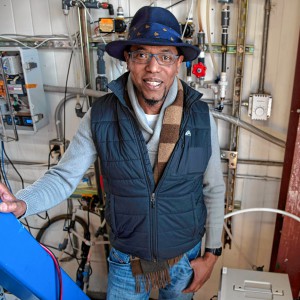 Advancing water treatment: UMass startup Elateq Inc. wins state grant to deploy new technology
Advancing water treatment: UMass startup Elateq Inc. wins state grant to deploy new technology New Realtor Association CEO looks to work collaboratively to maximize housing options
New Realtor Association CEO looks to work collaboratively to maximize housing options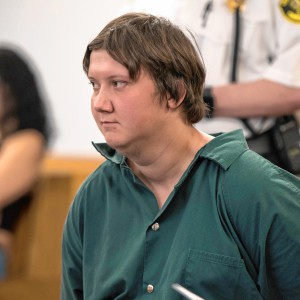 Northampton man will go to trial on first-degree murder charge after plea agreement talks break down
Northampton man will go to trial on first-degree murder charge after plea agreement talks break down 
